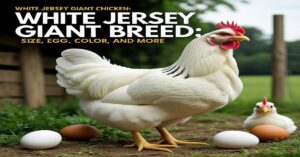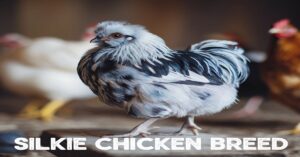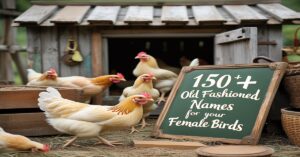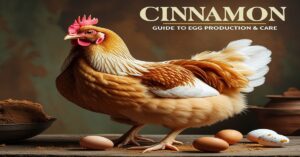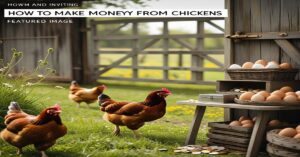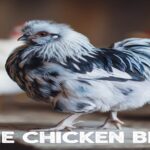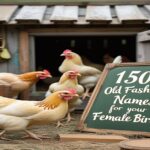The ISA Brown chicken breed is one of the most well-known and sought-after hybrid chickens, especially valued for its egg-laying capacity, hardiness, and friendly nature. These chickens have made their mark in both commercial farming and backyard flocks thanks to their consistent egg production and relatively easy maintenance. But there’s more to the ISA Brown than just being a reliable layer.
This guide will delve deep into everything you need to know about the breed, from its history and appearance to health considerations, housing needs, and much more.
Here’s a table summarizing the key facts and figures about the ISA Brown chicken breed:
| Attribute | Fact/Figure |
|---|---|
| Origin | Developed by Institut de Selection Animale (ISA) in the 1970s. |
| Breed Type | Hybrid |
| Primary Purpose | Egg production |
| Egg Color | Medium to dark brown |
| Egg Size | Large |
| Egg Production | Up to 300 eggs per year (approx. 5-6 eggs per week) |
| Weight (Roosters) | 6 lbs (2.7 kg) |
| Weight (Hens) | 5 lbs (2.3 kg) |
| Lifespan | 2–4 years |
| Temperament | Docile, friendly, and easy-going |
| Comb Type | Single comb, bright red |
| Wattles | Medium, bright red |
| Earlobes | Red or white |
| Hardiness | Cold-hardy, survives temperatures as low as -22°F (-30°C) |
| Heat Tolerance | Can tolerate temperatures up to 90°F (32°C) |
| Meat Production | Not bred for meat, but can provide some meat |
| Broodiness | Rarely broody |
| Noise Level | Quiet and well-suited for urban environments |
| Health Risks | Common issues: prolapse, parasites, calcium deficiency |
| Ideal Housing | Requires standard coop space with ventilation, room to roam |
| Suitable For | Beginners, small-scale farmers, and urban backyard flocks |
Introduction to ISA Brown Chickens
ISA Browns are a hybrid chicken breed developed by the Institut de Selection Animale (ISA), a company based in France specializing in poultry breeding. The breed was designed specifically for high egg production, and it excels in this regard. Unlike traditional chicken breeds that may be dual-purpose (used for both eggs and meat), ISA Browns are bred for a single purpose: efficient egg-laying.
ISA Browns are medium-sized, compact birds that thrive in a range of climates, making them ideal for both urban and rural farming. Their easy-going temperament and low-maintenance requirements have made them one of the most popular choices for new chicken keepers.

ISA Brown Chicken Breed History
The ISA Brown was developed in the 1970s by Institut de Selection Animale (ISA), an organization with a long history of producing high-performance poultry. The ISA Brown is a hybrid breed, meaning it is the result of a controlled cross between different chicken breeds. The primary breeds used in the creation of ISA Browns include the Rhode Island Reds, Leghorns, and Barred Rocks.
The goal behind the development of this breed was clear: create a chicken that could produce a large number of eggs while requiring minimal maintenance. Over the years, selective breeding has enhanced these traits, making the ISA Brown one of the most efficient layers in the poultry world.
Since its development, ISA Browns have become the go-to choice for large-scale egg producers and smaller hobby farms alike. Despite being a hybrid, ISA Browns maintain a consistent and reliable egg production rate, often outpacing traditional breeds in productivity.
Are ISA Brown Chickens Heritage or Hybrid?
ISA Browns are a hybrid breed, which means they are not naturally occurring like heritage breeds. Heritage breeds are traditional breeds that have been around for centuries, evolving naturally over time to suit their environment. Examples of heritage breeds include Rhode Island Reds and Barred Rocks.
Hybrid chickens, such as the ISA Brown, are intentionally bred by crossing different chicken breeds to combine the best characteristics of each. The purpose of breeding hybrids is usually to improve certain traits such as egg-laying ability, hardiness, and resistance to disease. In the case of ISA Browns, the focus was primarily on egg production.
While ISA Browns are more efficient in terms of egg-laying, heritage breeds tend to be more adaptable and versatile. Heritage chickens are known for their resilience in a variety of environments and their ability to maintain good health over longer lifespans. In contrast, hybrid chickens like ISA Browns are often less hardy, particularly when it comes to living out their full lifespan.
ISA Brown Chicken Physical Characteristics
ISA Browns are medium-sized chickens with a compact body and plump physique. While they are not known for their dramatic appearance, their physical characteristics are functional and contribute to their overall efficiency as egg layers.

Key Physical Features:
- Comb: The ISA Brown has a bright red, single comb that is typical of many chicken breeds. The comb is important for regulating body temperature and helps keep the chicken cool during hot weather.
- Wattles: The wattles of an ISA Brown are medium-sized and bright red, matching the comb. Wattles play a role in thermoregulation, helping the chicken release excess body heat.
- Earlobes: ISA Browns can have either red or white earlobes, contributing to their overall appearance. Earlobes also have an influence on the quality of eggs the chicken lays—generally, chickens with red earlobes tend to lay brown eggs.
- Feather Color: ISA Browns typically have medium to dark brown feathers with a reddish hue. This coloration helps them blend into their environment while providing some camouflage from predators.
- Body Type: Their body is medium-sized and compact, built for high egg production. ISA Browns are not as large as some dual-purpose breeds, but their compact size makes them efficient layers without requiring too much space.
Weight:
- Roosters: Around 6 lbs (2.7 kg).
- Hens: Approximately 5 lbs (2.3 kg).
Their size is just right for producing eggs without putting too much strain on their bodies. This balanced build allows for high egg production rates while also keeping them resilient and adaptable.
How Much Do ISA Brown Chickens Weigh?
In terms of weight, ISA Browns are a medium-sized breed, with roosters weighing about 6 lbs and hens about 5 lbs. This places them in the middle of the weight spectrum compared to other chicken breeds. Their weight is light enough that they don’t require excessive food, but heavy enough that they can produce large eggs consistently.
The moderate weight of the ISA Brown plays a role in its egg-laying efficiency. These birds can produce eggs without placing too much strain on their bodies, which is an important factor when considering long-term productivity. Their manageable weight also makes them easier to handle compared to larger meat breeds.
ISA Brown Chicken Lifespan
The average lifespan of an ISA Brown chicken is between 2 to 4 years, with most chickens reaching their peak egg-laying potential during the first two years. This is relatively short compared to heritage breeds, which can live for 6 to 8 years or longer.
While they have a shorter lifespan, ISA Browns make up for it by being extremely productive during their peak years. After the age of two, egg production may decline, and many commercial farmers choose to replace their ISA Browns at this stage. However, in backyard settings, ISA Browns can still live for several more years with proper care and attention.

Tips for Extending Their Lifespan:
- Provide a balanced diet that includes a variety of grains, proteins, and calcium.
- Keep them in a clean, dry environment to avoid diseases and parasites.
- Ensure they have access to fresh water at all times.
- Regularly monitor for signs of illness or injury and seek immediate treatment if necessary.
With the right care, your ISA Browns can remain healthy and productive well beyond their peak egg-laying years.
ISA Brown Chicken Egg Color
ISA Browns are known for laying medium to dark brown eggs. The quality of the eggs is one of the main reasons these chickens are favored by egg producers. Brown eggs are often preferred by consumers, and the size and texture of the eggs laid by ISA Browns are consistent and reliable.
On average, an ISA Brown hen can lay up to 300 eggs per year, making them one of the most prolific egg layers among hybrid chickens. These eggs are not only large in size but also have a sturdy, hard shell, which is ideal for both commercial egg producers and backyard farmers alike.
Egg Production Facts:
- Egg color: Medium to dark brown.
- Egg size: Large.
- Egg production rate: Up to 300 eggs per year.
Their high egg production is a major selling point for those looking to start a poultry business or even hobbyists who simply want a reliable source of eggs. An ISA Brown hen will typically lay an egg every 1-2 days during its peak years.
How Many Eggs Do ISA Brown Chickens Lay?
The primary reason farmers and backyard chicken keepers choose ISA Browns is for their exceptional egg production. These birds can lay as many as 300 eggs per year, which is significantly higher than many other chicken breeds. The high rate of egg production makes ISA Browns one of the best choices for those looking to maximize their egg supply without needing a large flock.
Their consistent egg production is a direct result of their hybrid nature, designed specifically for efficiency. Unlike heritage breeds, which may lay fewer eggs but live longer, ISA Browns are engineered to be highly productive during their prime years. After two years, however, their egg production may start to taper off.
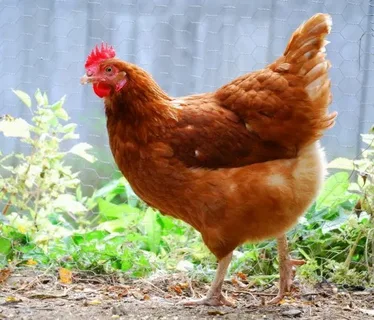
Breeding ISA Brown Chickens
Breeding ISA Browns is a challenging process. As a hybrid breed, ISA Browns do not breed true, meaning that if you were to breed two ISA Browns together, their offspring may not exhibit the same high egg-laying capabilities. This is a common trait among hybrid breeds, as their characteristics are optimized for performance but not necessarily for reproduction.
If you’re planning to breed ISA Browns for egg production, it is important to understand that you’ll need to purchase new stock from reputable breeders or hatcheries regularly. If you’re trying to breed for meat or egg production in a self-sustaining manner, you may want to consider dual-purpose breeds that breed true, like the Rhode Island Red.
Are ISA Brown Chickens Broody?
ISA Browns are not typically broody. This means that they generally will not go “broody” to sit on and hatch their eggs. This trait can be both a benefit and a drawback depending on your needs. If you’re primarily concerned with egg production, the fact that ISA Browns are not broody can be an advantage, as they will continue laying consistently without the distraction of wanting to hatch eggs.
However, if you want to hatch your own chicks, you may need to use an incubator or rely on another breed that is known to be broody, such as the Silkie or Orpington.
Hardiness of ISA Brown Chickens
ISA Browns are known for their hardiness, being able to tolerate both cold and hot temperatures. In fact, they can survive in environments as cold as -22°F and handle temperatures up to 90°F with proper shelter. Their adaptability to a wide range of weather conditions makes them a great option for those raising chickens in areas with harsh winters or hot summers.
This hardiness, combined with their robust immune systems, makes ISA Browns a low-maintenance breed when it comes to managing environmental stress. Of course, it’s still important to provide shelter, fresh water, and a balanced diet, especially in extreme weather.
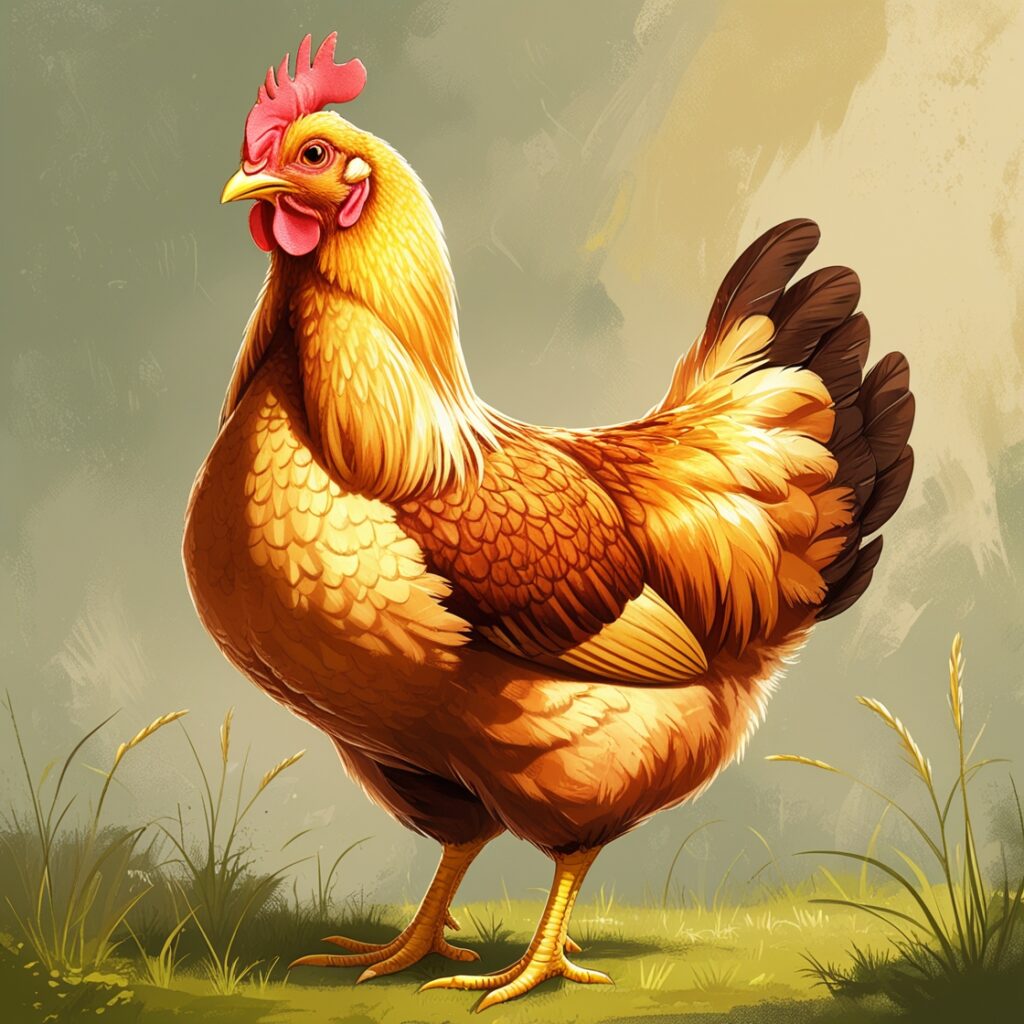
Common ISA Brown Chicken Health Risks
While ISA Browns are generally healthy chickens, there are some common health risks to watch out for:
- Egg binding: As high producers, ISA Browns are more prone to egg-binding, a condition where an egg becomes stuck in the reproductive tract.
- Prolapse: This occurs when the tissues of the vent are pushed out of the body, often due to laying large eggs.
- Parasites: Regular worming and mite treatments are important to keep your ISA Browns healthy.
- Frostbite: During winter, ISA Browns’ comb and wattles can suffer from frostbite if not properly protected.
To avoid these health risks, provide your ISA Browns with a clean, dry, and safe environment, ensure they receive adequate nutrition, and regularly check for signs of illness.
Are ISA Brown Chickens Good for Meat?
ISA Browns are not ideal for meat production, as they are primarily bred for egg-laying. Their size and structure make them less suitable for meat production compared to dual-purpose breeds like the Rhode Island Red or Plymouth Rock. If you’re raising chickens for both meat and eggs, you may want to consider breeds designed for both purposes.
However, if you’re looking for small-scale meat production and don’t mind
the smaller frame of an ISA Brown, they can still provide some meat, though it won’t be as much as larger, meat-specific breeds.
This detailed guide covers everything you need to know about ISA Brown chickens. With their high egg production, hardiness, and friendly nature, they remain a top choice for both commercial egg farms and small-scale poultry enthusiasts.
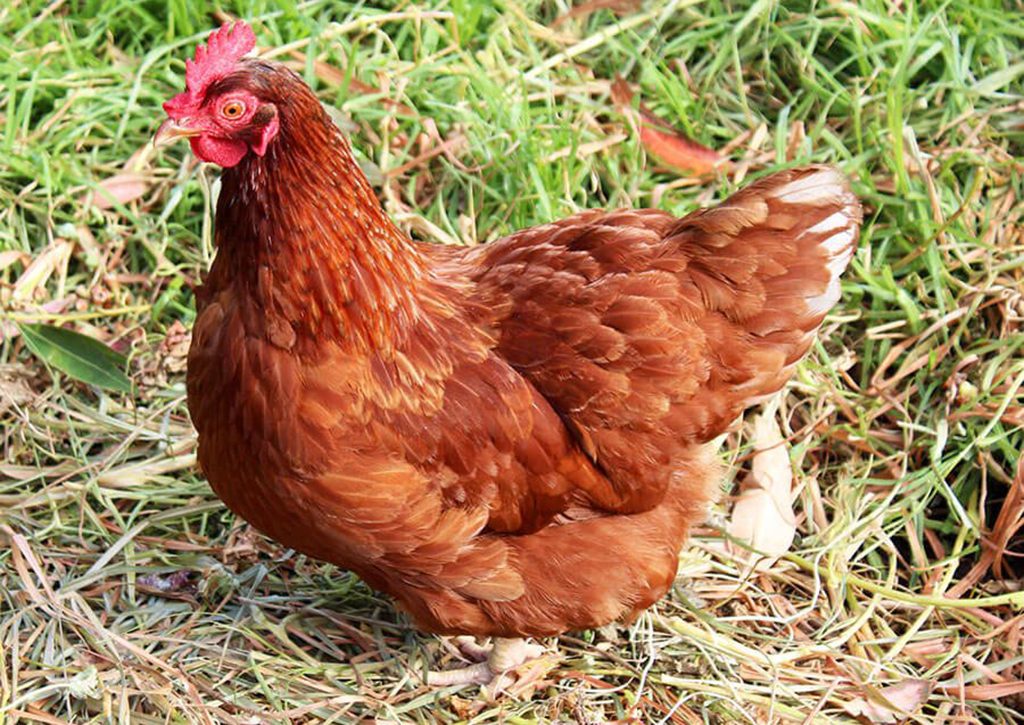
FAQs
How to breed ISA Brown chicken?
Breeding ISA Browns requires using parent stock breeds from their hybrid origins. However, mating ISA Browns with each other won’t consistently reproduce the same hybrid characteristics.
What happens if you breed ISA Brown chicken?
Since ISA Browns are hybrids, breeding them won’t produce consistent offspring with the same characteristics, and hens and roosters have different colorations for commercial purposes.
What breeds make an ISA Brown?
ISA Browns are a hybrid that results from a mix of various breeds, including Rhode Island Reds and Whites, though the exact genetic composition is kept secret by the breeders.
What age do ISA Browns stop laying?
ISA Browns typically stop laying eggs consistently after 2-3 years, although they can continue to lay, albeit in smaller quantities, for a few more years with proper care.
Are ISA Brown chickens good?
ISA Browns are renowned for their reliable performance, with excellent feed conversion and the ability to lay up to 500 high-quality eggs, making them top producers worldwide.
What color eggs do ISA Brown lay?
ISA Browns are known for laying medium to dark brown eggs, consistently producing eggs with strong, sturdy shells, making them a popular choice for egg-laying.
What are the disadvantages of ISA Brown chickens?
ISA Browns have a shorter lifespan compared to other breeds, typically living only 2-3 years, which can be a downside for those seeking long-term poultry companions.
Are ISA Browns aggressive?
ISA Browns are gentle and friendly, with a docile nature that makes them great pets and ideal for backyard settings, as they are non-aggressive.
What does ISA Brown eat?
ISA Browns are typically fed 111 grams of high-quality layer pellets or grain daily, supporting their active egg-laying capabilities while maintaining a healthy weight.
What is the lifespan of an ISA Brown?
ISA Browns usually live for 2-3 years, though with proper care, some can live up to 5-8 years, with egg production generally decreasing after the first few years.
How high can ISA Brown chickens fly?
ISA Browns can achieve short bursts of flight, typically reaching heights of 8-10 feet, though they can’t fly long distances like other bird species.
Can ISA Browns reproduce?
ISA Browns, being hybrids, won’t breed true, but mating them with other egg-laying breeds can produce offspring that maintain excellent laying abilities.
Are golden comets and ISA Browns the same?
Yes, ISA Browns are also known by other names like Golden Comets, Cinnamon Queens, and Golden Buffs, all of which share similar friendly and productive traits.
How long before ISA Brown lays eggs?
ISA Browns typically begin laying eggs around 20 weeks of age, though environmental factors and diet can cause slight variations in the timing.
What is the primary use of ISA Brown chickens?
ISA Browns are primarily valued for their exceptional egg-laying abilities and friendly nature, making them popular in both commercial egg production and backyard flocks.
Can ISA Browns fly?
ISA Browns are capable of short flights, reaching up to 5 feet in height, but they typically remain grounded or only fly short distances, making them less likely to escape.
Why are my ISA Browns dying?
ISA Browns, bred for continuous egg production, are susceptible to health issues like tumors or reproductive problems due to the stress of constant laying. Proper care is vital to prevent these conditions.
Read more knowledgeable blogs on Flowy Magazine

James Clair is a passionate writer and researcher with a deep fascination for animal behavior and its intricate connection to human life. With a background in [relevant field of study, e.g., zoology, psychology, ethology], James has spent years studying the natural world, focusing on how animals’ actions and instincts impact human emotions, behavior, and society.
His expertise in [specific topics or regions of focus, e.g., canine psychology, animal communication, wildlife conservation] has led to numerous published works and collaborations with renowned researchers and institutions. Through his work at Flawy Magazine, James aims to bridge the gap between scientific research and public understanding, offering insightful, accessible articles that explore the complex relationship between humans and animals.
When he’s not writing, James enjoys [personal hobbies or interests, e.g., hiking in nature, volunteering at animal shelters, photography] and is an advocate for [cause or charity related to animals or conservation]. His mission is to inspire readers to see animals not just as companions or creatures of the wild, but as beings whose behavior holds valuable lessons for us all.


